#Holy Land Pilgrimage
Text
There are numerous Christian heritage sites in Israel as well, representing the true significance of the Bible. For a complete religious experience of Israel, book our HOLY LAND TOUR.
.
Visit:- https://www.christianstravels.com/holy-land-tours-itinerary/
.
ChristianTravel #Christians #TravelsChristianTours #ChristianGroupTours #ChristianGuide #ChristianTravelAgancy #HolyLandTours #HolyLandPilgrimage #HolyLandPackages #HolyLandBiblicalTours
#Christian Travels#ChristianTravel#Christian Tours#Christian Group Tours#Christian Guide#Christian Travel Agancy#Holy Land Tours#Holy Land Pilgrimage#Best Holy Land Tours#Holy Land Packages#Holy Land Biblical Tours#South Africa Tour#South Africa Safari#Best African Safari Tours#Delhi Darshan#Delhi Tours#Delhi Visit#Delhi Darshan Itinerary#North east tour#tour of north east#7 sister tour#Flight Ticket Booking#visa work#Church tour holy land#Israel Tours#Egypt Tour#manipur tour#nagaland tour
0 notes
Note
Do you machine sew or like hand sew ? I had tried to hand sew once .... sprained my wrist and had a headache for a week.
i used to hand sew everything bc i was deathly afraid of sewing machines, but it always took too long to be function and left me with calloused fingers + a sore wrist,,, i have since Befriended the machine and am currently much happier with far fewer injuries. if you're interested in sewing but don't have a machine, i'd suggest looking into a very cheap, very old model (if it has a screen avoid it at all costs) or investing in a hand-held sewing machine, which probably isn't going to cut down on the time but will help to stave off early onset arthritis for another decade or so. i do still embroider by hand, but other then that, you wouldn't be able to tear my machine out of my cold dead hands. i've taken care of her like a retired warhorse and she and i are now emotionally bonded.
#that being said#(and this part is only going to be coherent with people who are also in the trenches or have been before)#i am thinking about upgrading soon#i have an elderly janome right now#and i do love her bc she's not too picky about string tension or needle type and takes a thread jam like a champ#but i am also missing every single specialty foot she came with and have never actually seen the manual#i'm not sure if it actually makes that much of a difference tho#perhaps another pilgrimage to the holy land (45 minute trip to joannes) will reveal the answer#personal#anon ask
36 notes
·
View notes
Text








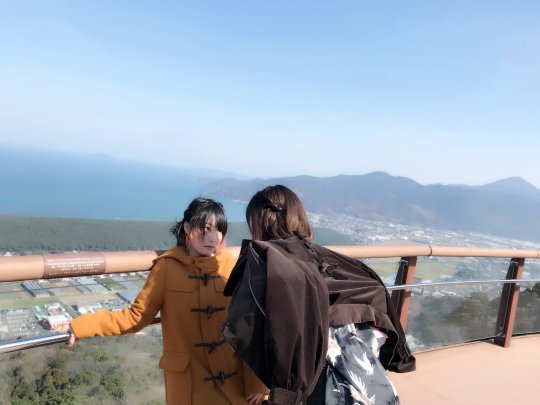

Photographs alongside their anime counterpart of Kaede Hondo (Sakura Minamoto), Maki Kawase (Junko Konno) & Rika Kinugawa (Yugiri) on their "Official Bus Tour of the Holy Land Pilgrimage" trip to Saga Prefecture at the start of 2019, where they alongside various staff from the anime visited various real life locations featured in the first season of the anime.
#Kaede Hondo#Maki Kawase#Rika Kinugawa#seiyuu#Zombieland Saga#anime caps#Official Bus Tour of the Holy Land Pilgrimage#Saga#kinugawa putting her jacket on her shoulders to serve as Kotaro's stand in so funny
69 notes
·
View notes
Text
~This photo was taken at the Church of the Holy Sepulchre on a pilgrimage in May, 2019. I don't know the pilgrim who took it, but I saw it at the time, as it was passed to some of us there. I was one of the pilgrims in this group and can verify that there was no one standing at the doors to the Tomb of Christ; after the person took the photo with a camera phone,
this figure was in the photo.~
(Click on the picture to view the video.)
(Video posted by John Lau)
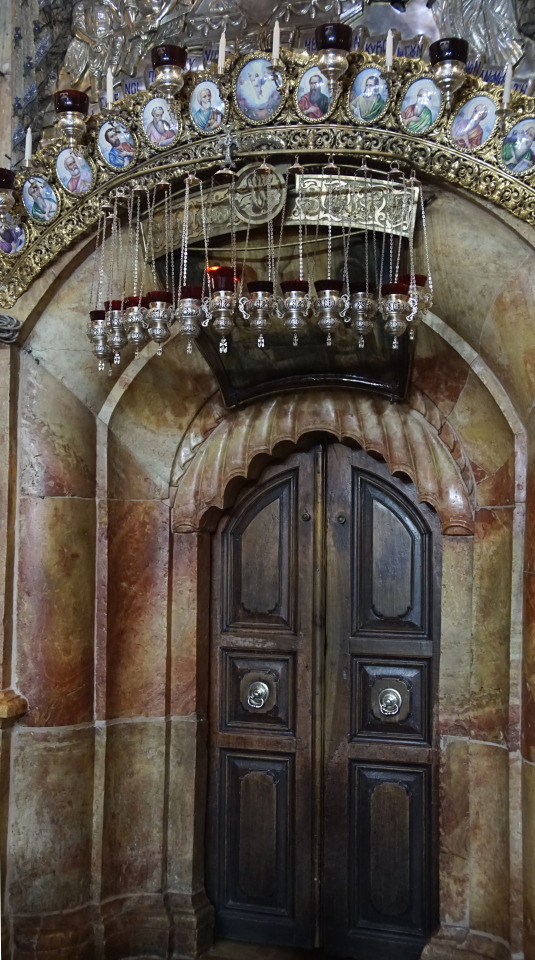
~This is my photo of the doors. There was no one standing there.~
(Photo © dramoor May 4, 2019, Tomb of Christ, Church of the Holy Sepulchre, Jerusalem)
#Lord Jesus Christ#miraculous photo#pilgrimage to the Holy Land#206 Tours#Jim Caviezel#Fr. Donald Calloway#Christian#Tomb of Christ#Church of the Holy Sepulchre#travel#Israel#photography#photographers on tumblr#Videos#Jesus Christ is the Son of God#Jesus Christ is the Savior of the world
18 notes
·
View notes
Text
0 notes
Text
Church of the Primacy of St. Peter
Following his death and resurrection, Jesus appeared to the disciples a recorded eight times throughout the Gospels. His first appearance was to Mary Magdalene (Mark 16:9) and his sixth appearance was to the seven disciples, including Peter, where they shared breakfast on the beach (John 21).
The Church of the Primacy of St. Peter is located close to Capernaum, where Jesus centered a lot of his ministry in Galilee. It is also a large fishing area and since the disciples were fishermen by trade, it makes sense they would have come home to this area following Jesus’ death. That makes this location a very likely place for this part of the Jesus story.
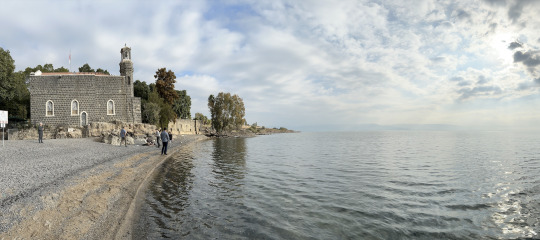
Pictured: The Church of St. Peter’s Primacy looking over the Sea of Galilee
John chapter 21 has two parts: Jesus and the miraculous catch of fish (John 21:1-14) where the disciples go out to fish, catch nothing, and Jesus says “Throw your net on the right side of the boat and you will find some (vs. 6).” The disciples then join Jesus for breakfast on the beach (vs. 12).
The second part of this story is when Jesus reinstates Peter, after having denied him three times before his death (John 21:15-25)
“When they had finished eating, Jesus said to Simon Peter, ‘Simon son of John, do you love me more than these?’ ‘Yes, Lord,’ he said, ‘you know that I love you.’ Jesus said, ‘Feed my lambs.’ Again Jesus said, ‘Simon son of John, do you love me?’ He answered, ‘Yes, Lord, you know that I love you.’ Jesus said, ‘Take care of my sheep.’ The third time he said to him, ‘Simon son of John, do you love me?’ Peter was hurt because Jesus asked him the third time, ‘Do you love me?’ He said, ‘Lord, you know all things; you know that I love you.’ Jesus said, ‘Feed my sheep. Very truly I tell you, when you were younger you dressed yourself and went where you wanted; but when you are old you will stretch out your hands, and someone else will dress you and lead you where you do not want to go.’ Jesus said this to indicate the kind of death by which Peter would glorify God. Then he said to him, ‘Follow me!’” - John 21:15-22
At this point in the story of Jesus, Jesus hands over leadership to Peter. Jesus prophesied how Peter would end up dying a sacrificial death and in doing so, removed the guilt Peter felt having denied Jesus. Essentially Jesus is saying to Peter “this is not the end but just the beginning.”

Pictured: a statue commemorating Peter’s commissioning
The church is built overtop of the rocks where this story takes place. It’s believed that on these rocks, Jesus cooked the fish the disciples caught and served them breakfast before commissioning Peter to continue his ministry.

Pictured: the inside of the church with the rock believed to be the location of the breakfast on the beach appearance story.
Since the church is right on the Sea of Galilee, we were able to spend some time in devotion and playing in the water.
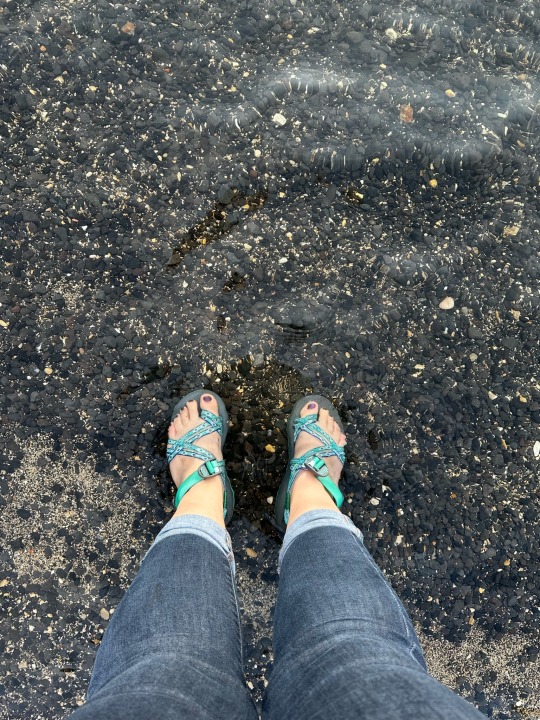

Pictured: (left) my feet in the Sea of Galilee - the water was so clear! (right) Jon and I at the edge of the water.
Jonathan added that it was really cool to see this place where Peter was commissioned. The text of “feed my sheep” is often used as an ordination text and as a group with a lot of pastors we were reminded of this. By standing at a different angle near the statue, it was almost as if Jesus was commissioning us as well.
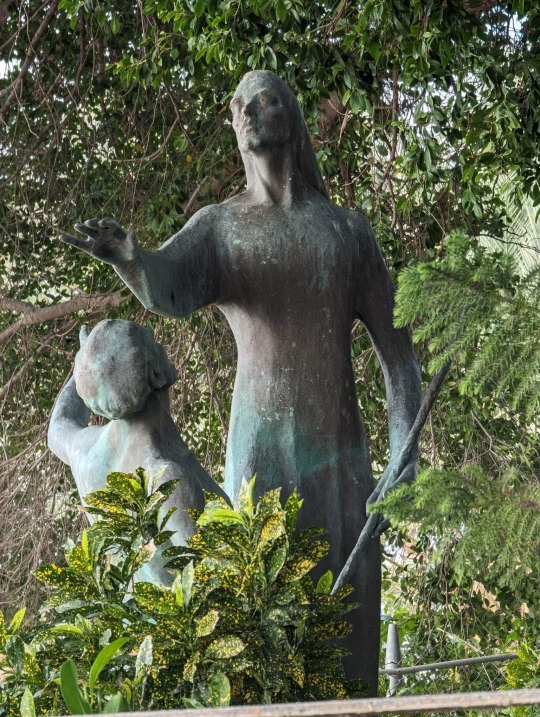
1 note
·
View note
Text
This Christmas I am thinking about Palestinian Christians - who make up the oldest Christian community in the world.
Palestinian Christians, like Palestinians of other faiths, were also dispossessed of their homes and lands during the Nakba and experience the brutality of the occupation just as much as any other Palestinian does. Pilgrimages to occupied Palestine frequently ignore the entire existence of Palestinian Christians - who are routinely barred from visiting their own holy and ancestral sites.
Shireen Abu Akleh, an Al Jazeera reporter who was assassinated by Israel while covering an IOF raid on Jenin, was a Palestinian Christian. Edward Said, the author of Orientalism, was raised Christian from a Palestinian Christian family.
Palestine is not a Muslim cause, it’s not even an Arab cause, and it’s not a religious conflict - Free Palestine is a cause for all Palestinians against colonialism, including Palestinian Christians. Merry Christmas to Palestinian Christians.

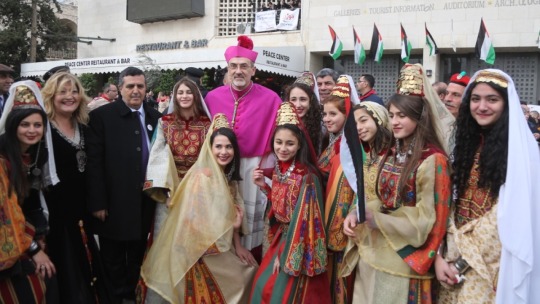

14K notes
·
View notes
Text
Someone on Reddit made the mistake of saying, "Teach me how this conflict came about" where I could see it.
Let me teach you too.
The common perception is that Jews came out of nowhere, stole Palestinian homes and kicked Palestinians out of them, and then bombed them for 75 years, until they finally rebelled in the form of Hamas invading Israel and massacring 22 towns in one day.
The historical reality is that Jews have lived there continuously for at least 3500 years.
There are areas, like Meggido iirc, with archeological evidence of continuous habitation for 7,000 years, but Jewish culture as we recognize it today didn't develop until probably halfway through that.
Ethnic Jews are the indigenous people of this area.
Indigeneity means a group was originally there, before any colonization happened, and that it has retained a cultural connection to the land. History plus culture.
That's what Jews have: even when the diaspora became larger than the number of Jews in Israel, the yearning to return to that homeland was a daily part of Jewish prayer and ritual.
The Jewish community in Israel was crushed pretty violently by the Roman Empire in 135 CE, but it was still substantial, sometimes even the majority population there, for almost a thousand years.
The 600s CE brought the advent of Islam and the Arab Empire, expanding out from Saudi Arabia into Israel and beyond. It was largely a region where Jews were second-class citizens. But it was still WAY better than the way Christian Europe treated Jews.
From the 700s-900s, the area saw repeated civil wars, plagues, and earthquakes.
Then the Crusades came, with waves of Christians making "pilgrimages to the Holy Land" and trying to conquer it from Muslims and Jews, who they slaughtered and enslaved.
Israel became pretty well depopulated after all that. It was a very rough time to live there. (And for the curious, I'm calling it Israel because that's what it had been for centuries, until the Romans erased the name and the country.)
By the 1800s, the TOTAL population of what's now Israel and Palestine had varied from 150,000 - 275,000 for centuries. It was very rural, very sparsely populated, on top of being mostly desert.
In the 1880s, Jews started buying land and moving back to their indigenous homeland. As tends to happen, immigration brought new projects and opportunities, which led to more immigration - not only from Jews, but from the Arab world as well.
Unfortunately, there was an antisemitic minority spearheaded by Amin al-Husseini. Who was very well-connected, rich, and from a politically powerful family.
Al-Husseini had enthusiastically participated in the Armenian Genocide under the Ottoman Empire. Then the Empire fell in World War One, and the League of Nations had to figure out what to do with its land.
Mostly, if an area was essentially operating as a country (e.g. Turkey), the League of Nations let it be one. In areas that weren't ready for self-rule, it appointed France or Britain to help them get there.
In recognition of the increased Jewish population in their traditional, indigenous homeland, it declared that that homeland would again become Israel.
As in, the region was casually called Palestine because that was the lay term for "the Holy Land." It had not been a country since Israel was stamped out; only a region of a series of different empires. And the Mandate For Palestine said it was establishing "a national home of the Jewish people" there, in recognition of "the historical connection of the Jewish people with Palestine and to the grounds for reconstituting their national home in that country."
Britain was appointed to help the Arab and Jewish communities there develop systems of self-government, and then to work together to govern the region overall.
At least, that was the plan.
Al-Husseini, who was deeply antisemitic, did not like this plan.
And, extra-unfortunately, the British response to al-Husseini inciting violent anti-Jewish riots was to put him in a leadership role over Arab Palestine.
They thought it would calm him down and perhaps satisfy him.
They were very wrong.
He went on to become a huge Hitler fanboy, and then a Nazi war criminal. He co-created the Muslim Brotherhood - which Hamas is part of - with fellow fascist fanboy Hassan al-Banna.
He got Nazi Party funding for armed Muslim Brotherhood militias to attack Jews and the Brits in the late 30s, convincing Britain to agree to limit Jewish immigration at the time when it was most desperately needed.
He started using the militias again in 1947, when the United Nations voted to divide the mandated land into a Jewish homeland and a Palestinian one.
Al-Husseini wouldn't stand for a two-state solution. He was determined to tolerate no more than the subdued, small Jewish minority of second-class citizens that he remembered from his childhood.
As armed militias increasingly ran riot, the Arab middle and upper classes increasingly left. About 100,000 left the country before May 1948, when Britain was to pull out, leaving Israel and Palestine to declare their independence.
The surrounding nations didn't want war. They largely accepted the two-state solution.
But al-Husseini lobbied HARD. And by mobilizing the Muslim Brotherhood to provide "destabilizing mass demonstrations and a murderous campaign of intimidation," he got the Arab League nations to agree to invade, en masse, as soon as Britain left.
About 600,000 Arabs fled to those countries during the ensuing war.
Jews couldn't seek refuge there; in fact, most of those countries either exiled their Jews directly, confiscating their property first, or else made Jewish life unlivable and exploited them for underpaid or slave labor for years first.
By the time the smoke cleared and a peace treaty was signed, most of the Arab Palestinian community had fled; there was no Arab Palestinian leadership; many of the refugees' homes and businesses had left had been destroyed in the war; and Israel had been flooded with nearly a million refugees from the Arab League countries and the Holocaust - even more people than had fled the war.
That was the Nakba. The one that gets portrayed as "750,000 Palestinians fled or were expelled!" in the hope that you'll assume they were expelled en masse, their beautiful intact homes all stolen.
Egypt had taken what's now the Gaza Strip in that war, and Jordan took what's now the West Bank - expelling or killing all the Jews in it first.
(Ironically, Jordan was originally supposed to be part of Israel. Britain, inexplicably, cut off what would have been 75% of its land to create Jordan.
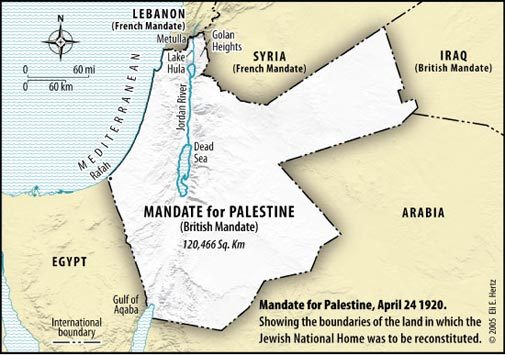
Even more inexplicably, nobody ever talks about it. I've never seen anyone complain that Jordan was stolen from Palestinians. Possibly because Jordan is also the only country that gave Palestinian refugees full citizenship, and it's about half Palestinian now.
Israel is nearly 25% Arab Palestinians with full citizenship and equal rights, so it's not all that different -- but the fundamental difference of living in a country where the majority is Jewish, not Muslim, probably runs pretty deep.)
Anyway: that's why Palestine is Gaza and the West Bank, rather than being some contiguous chunk of land. Or being the land set aside by the U.N. in 1947.
Because Arab countries took that land in 1948, and treated them as essentially separate for 20 years.
Israel got them back, along with the Golan Heights and the Sinai Peninsula, in the next war: 1967, when Egypt committed an act of war by taking control of the waterways and barring Israel from them. It gave the Sinai back to Egypt as part of the 1979 peace accords between Egypt and Israel.
Israel tried to give back the Gaza Strip at the same time. Egypt refused.
Palestine finally declared independence in 1988.
But Hamas formed at about the same time. Probably in response, in fact. Hamas is fundamentally opposed to peace negotiations with Israel.
Again: Hamas is part of a group founded by Nazis.
Hamas has its own charter. It explains that Jews are "the enemy," because they control the drug trade, have been behind every major war, control the media, control the United Nations, etc. Basic Nazi rhetoric.
It has gotten adept at masking that rhetoric for the West. But to friendlier audiences, its leaders have consistently said things like, "People of Jerusalem, we want you to cut off the heads of the Jews with knives. With your hand, cut their artery from here. A knife costs five shekels. Buy a knife, sharpen it, put it there, and just cut off [their heads]. It costs just five shekels."
(Palestinians were outraged by this speech. Palestinians, by and large, absolutely loathe Hamas.
It's just that it's not the same to say that to locals, as it is to say it where major global powers who oppose this crap can hear you.)
Hamas has stated from the beginning that its mission is to violently destroy Israel and take over the land.
It has received $100M in military funding annually, from Iran, for several years. Because Iran has been building a network of fascist, antisemitic groups across the Middle East, in a blatant attempt to control more and more of it: Hezbollah in Lebanon. The Houthis in Yemen.
Iran has been run by a very far-right, deeply antisemitic dictatorship for decades now, which pretty openly wants to take down both Israel and the U.S.
Last year, Iran increased Hamas's funding to $350M.
The "proof of concept" invasion of Israel that Hamas pulled off on October 7th more than justifies a much bigger investment.
Hamas has publicly stated its intention to attack "again and again and again," until Israel has been violently destroyed.
That is how this conflict came about.
A Nazi group seized power in Gaza in 2007 by violently kicking the Palestinian government out, and began running it as a dictatorship, using it to build money and power in preparations for exactly this.
And people find it shockingly easy to believe its own hype about being "the Palestinian resistance."
As well as its propaganda that Israel is not actually targeting Hamas: it's just using a literal Nazi invasion and massacre as an excuse to randomly commit genocide of the fraction of Palestine it physically left 20 years ago.
Despite the fact that Palestinians in Gaza have been protesting HAMAS throughout the war.
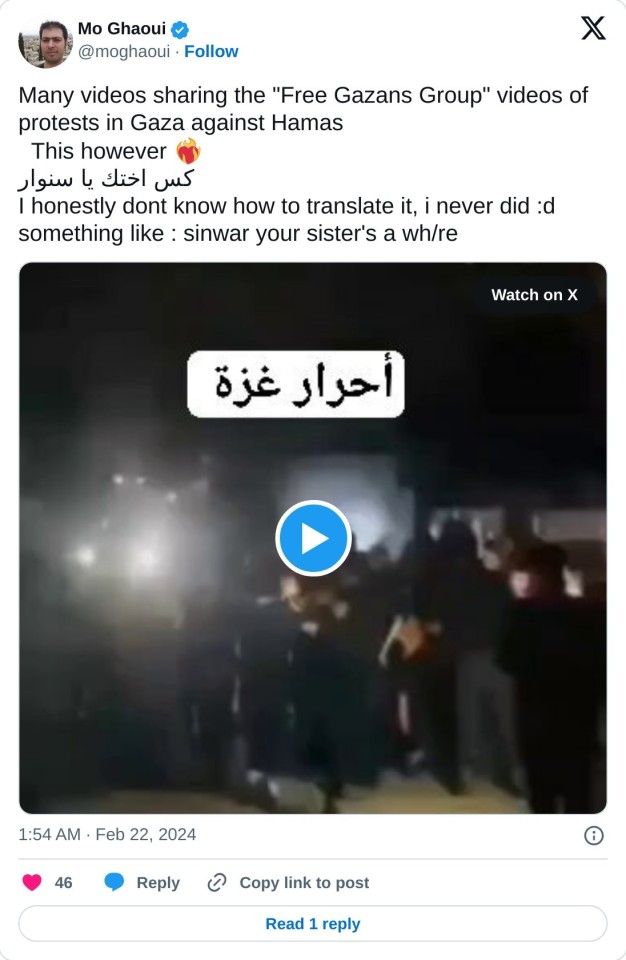
#free palestine#free gaza from hamas#free everyone from hamas it's awful#we want to live movement#free gazans group#center the people directly affected#Ironically it's almost exclusively zionists who know about and support the actual activists in Palestine#because Zionism is a real Jewish term for self-determination not something you can redefine to demonize us#and the pro-hamas movement is inherently both antisemitic and anti-Palestinian#wall of words#jumblr#jewish history#palestinian history
808 notes
·
View notes
Text

Hiking - "I don't like either the word or the thing. People ought to saunter in the mountains - not hike! Do you know the origin of that word 'saunter?' It's a beautiful word. Away back in the Middle Ages people used to go on pilgrimages to the Holy Land, and when people in the villages through which they passed asked where they were going, they would reply, 'A la sainte terre,' 'To the Holy Land.' And so they became known as sainte-terre-ers or saunterers. Now these mountains are our Holy Land, and we ought to saunter through them reverently, not 'hike' through them."
- John Muir
304 notes
·
View notes
Text
Jerusalem Tour With Christopher Cross
Are you looking for Jerusalem Tour ? Christopher Cross, KHSprovides Catholic tours and pilgrimages, Jerusalem Tour. To get more visit www.catholicholyland.com .
#Custom Tour of the Holy Land#Holy Land Tour#Holy Land Pilgrimage#Catholic pilgrimage tours#Catholic tour company#Catholic tours and travels#Best catholic pilgrimages#Catholic travel center#Catholic tour provider
0 notes
Photo
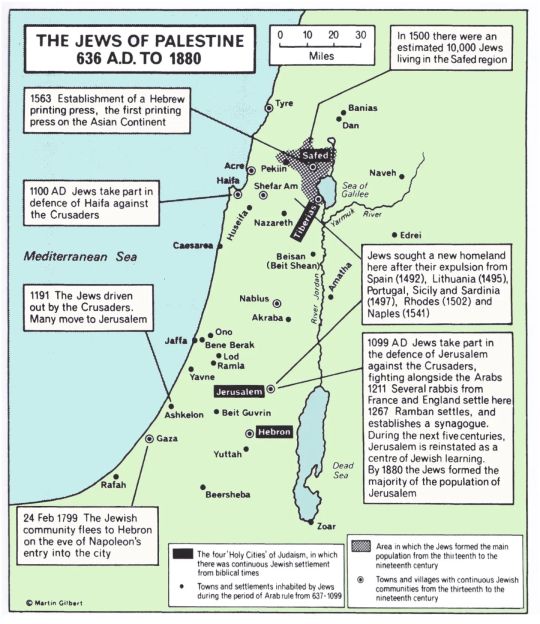
Jews in Palestine from the 7th century to the 19th century.
From “Atlas of Jewish History”, Martin Gilbert, Routledge, 1969, 2010
via cartesdhistoire
In 636, at the Battle of Yarmouk, the Arabs captured Tiberias and Galilee. Then they besieged and took Jerusalem and Caesarea before completing their conquest in 641 with the capture of Ascalon.
From the 8th century, the largest Jewish community was found in Ramleh, then, at the time of the Latin kingdom of Jerusalem (1099-1291), the most important Jewish communities were those on the coast: Tyre, Acre and Ascalon.
Between 1260 and 1516, relations between the Jews and the Mamluk power, fanatical and intolerant, were bad. The most important communities are in the interior (the ports were evacuated in the 13th century for fear of invasions): Jerusalem especially, Safed, Gaza, Hebron, a few villages in Upper Galilee. Pilgrimage to Jewish holy places – the “ziara” – is already very widespread there.
The Turks conquered Palestine in 1516. The community of Safed experienced great expansion with the cultural and technical contribution of Judeo-Iberian refugees.
But throughout the 19th century, Muslim populations also settled in Palestine: some 20,000 Egyptians during the conquests of Mehemet-Ali (in Gaza, Jaffa and Jericho), then several tens of thousands of Muslims, coming from the former Ottoman territories of the Balkans and the Caucasus. The sultan grants them land on favorable terms in Galilee and the coastal plain of Sharon. The accounts of European travelers in Palestine attest to the existence of numerous villages where Arabic is not spoken.
From 1840, the Jewish population of Jerusalem grew at a much faster rate than that of other communities, reaching 11,000 people in 1870, or half of the total population, and this before the major movements of Jewish immigration which began. from the 1880s; the Jewish population has since retained its majority status.
In 1872, the Palestinian population (Bedouins excluded) was 381,954 inhabitants (85% Muslims, 11% Christians and 4% Jews).
202 notes
·
View notes
Text
★ Main Story | Act 13 - Budding Spring | Chapter 1 - New Prologue

Towa: (So this is Veludo Station~. It’s smaller than I thought it’d be. The exit should be this way…)

Towa: (Umm, the map app says…)
Towa: Yeah, over there.
· • —– ٠ ✤ ٠ —– • ·
Towa: So this is Veludo Way…
Towa: (This is the heartland of theater, the place with the highest concentration of theaters in all of Japan… all kinds of theater companies, both large and small, are based here.)
Towa: (I’ve only ever seen it in videos, but there really is theater no matter where you look.)
Towa: (It’s amazing that theater continues all the way down the street.)
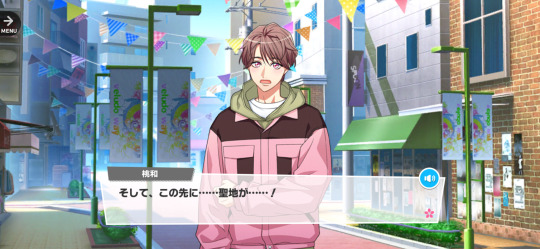
Towa: And just beyond that is where… the Holy Land…!
Towa: Calm down, calm down. Okay.
*Camera clicks*
Towa: (I’ll let the guys know…)
· • —– ٠ ✤ ٠ —– • ·
momo has entered the chat.
momo: At Veludo Way rn

Iv: congratsss. haven’t seen where you are rn in a hot minute lol
shiki: That’s Veludo Way?
Kar: AI detected
momo: But it’s legit!
Kar: Kinda blurry tho
shiki: Congrats on your long-awaited pilgrimage to the Holy Land! Happy for you!
momo: Haven’t gotten to the Holy Land yet. Gotta calm down first
Iv: lol you’ve gone all that way and still haven’t done that?
momo: It’s called the Holy Land because it’s a sacred place that you can’t just wander into, so it’d be impolite to be too careless about it
Kar: What’s with the sudden essay lmao
Iv: bestie’s trying to hit the nerd count
shiki: You’ve been working hard all this time to get to the Holy Land, so you should enjoy it to the fullest.
momo: I’ll do that!
· • —– ٠ ✤ ٠ —– • ·
*Bump*
Towa: !?
???: “--Gh.”
Towa: Huh…
Towa: (He’s crouching down? I wonder if he’s okay… is it my fault for bumping into him…?)
???: “The hell are you doing?”
Towa: (Huh? That voice, I think I’ve heard it before…)
???: “C’mon, let me give you a hand.”
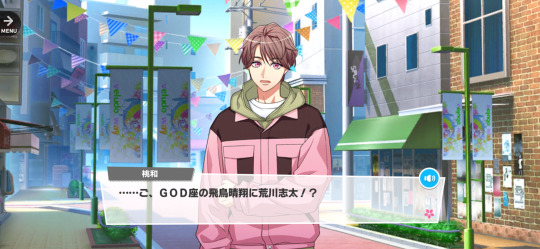
Towa: …G-GOD-za’s Haruto Asuka and Shift Arakawa!?
Shift: “It’s no use~... I can’t walk~...”
Haruto: “You drank too much.”
Shift: “My life’s a mess… I can’t even take another step forward…”
Haruto: “Quit overreacting just because you two broke up!”
Towa: (Ah, could it be… this is Veludo Way’s specialty…)
Shift: “I’m not overreacting! I’m always stuck playing a supporting role. At best, I’m just here to be used. I’ll never have a starring role!”
Shift: “If I keep living like this, I’ll just be stuck as a supporting role in someone else’s life.”
Shift: “What’s even the point of living like this…?”
Haruto: “Then live your own life, not someone else’s. The reason you can’t do that is because you put others at the center as the starring role.”
Haruto: “You’re the leading role in your own life. You’re the one who gets to decide what kind of life you live.”
Shift: “I’m the starring role in my own life…”
Towa: (I can’t believe they can do theater like this without a script…)
Towa: (I’ve only ever seen videos of street acts, but they were doing it so naturally. Amazing…)

Haruto: Thank you very much~!
Towa: --.
Shift: Past GOD-za performances are streaming until tomorrow! It’s only for a limited time, so don’t miss out!
*Applause*
· • —– ٠ ✤ ٠ —– • ·
Towa: (It was way too lucky of me to be able to see a street act done by GOD-za’s top two here…!)
Shift: Ah, sorry for bumpin’ into ya before.
Towa: !! No! Don’t worry about it!
Shift: See ya.
Haruto: Thanks for watching us~.
*Footsteps*
Towa: Haaah~... I should’ve taken a video…
Towa: (Veludo Way really is the place to see street acts done by a whole bunch of different theater companies.)
Towa: (Maybe I’ll see them too…)
Towa: (No way, it’d be impossible to have that kind of crazy luck two times in a row, but, but, what if I really did meet my oshi…)
Towa: --.
*Paper rustling*

Towa: (It’s something that’s way too good to ever actually happen, but I’ve decided that in the unlikely event that I do meet him, I’m going to make sure I get him to autograph this.)
Towa: (My most treasured possession…)
Towa: Ah, wait, did I bring a pen to get his autograph…
Towa: (Huh, I don’t have it. Did I seriously forget it~?)
*Wind blows*
Towa: Ah--!
*Paper falls to the ground*

???: …?
[ Next Part ⇢ ]
#a3!#a3! translation#towa ichinoe#haruto asuka#shift arakawa#// i love towa so much bro is living his best life as y/n
110 notes
·
View notes
Text




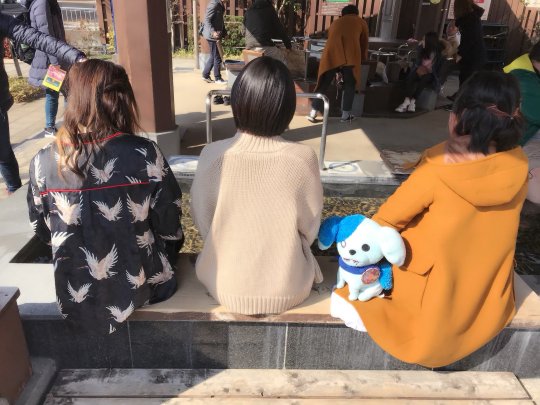



Photographs alongside their anime counterpart of Kaede Hondo (Sakura Minamoto), Maki Kawase (Junko Konno) & Rika Kinugawa (Yugiri) on their "Official Bus Tour of the Holy Land Pilgrimage" trip to Saga Prefecture at the start of 2019, where they alongside various staff from the anime visited various real life locations featured in the first season of the anime.
#Kaede Hondo#Maki Kawase#Rika Kinugawa#seiyuu#Zombieland Saga#anime caps#Official Bus Tour of the Holy Land Pilgrimage#Saga
32 notes
·
View notes
Text
The Sultan, they said, was a good man. Soft, quickly moved to tears. Out of compassion, he bought the freedom of a Christian woman's stolen daughter. Even Walther von der Vogelweide, the minnesinger in distant Germany, praised the "mildness" of the powerful ruler in the Orient, whose name has a good reputation in the West: Saladin, a righteous man.
He was a man who always kept his word, even to his enemies.
He let his subjects drag him to court, because God's laws applied equally to everyone. Also for him, the ruler who managed to do what no one had ever managed before: to unite the Islamic world of the Middle East after centuries of discord and to wrest Jerusalem, the holy city of the Muslims, from the Christians in 1187.
His name translates as "righteousness of faith", and Saladin is indeed a devout Muslim. Nevertheless, after his conquest of the Holy Land, he allowed the Christians and Jews there to continue praying to their God. This is another reason why, more than half a millennium later, Western Enlightenment thinkers would make him the epitome of the tolerant ruler.
But this al-Malik an-Nasir Salah ad-Din Abu'l-Muzaffer Yusuf ibn Ayyub ibn Shadi, known as Saladin for short, also had other sides.
He could be treacherous, vile and mean. He did not shy away from murder. Nevertheless, this man fascinated his contemporaries. He became one of the most revered rulers of the Islamic world and the most important opponent of the Crusaders.
Saladin was born in 1138 in Tikrit (in present-day Iraq), the son of a Kurdish officer. During his political career, Saladin was the first to bring Egypt's army under his control.
Saladin, a Sunni, now founds two universities where theology is taught according to Sunni theology - a signal that he is on the side of the population. He also abolished a number of taxes that contradicted the Koran and the teachings of the Prophet.
Saladin's subsequent conquests shock the Christian world. By 1174, his power extended from North Africa to the southern tip of the Arabian Peninsula. In 1186, he ruled from the Nile to the Tigris.
At the height of his power, the Sultan even dreamed of taking the Holy War to Europe, conquering Rome - and putting the Pope in chains.
The Crusaders conquered Jerusalem in 1099 and held it until Saladin besieged it in 1187 and handed it over to the Ayyubid dynasty, a Muslim sultanate that ruled the Middle East at the beginning of the 12th century.
Saladin wanted to recapture the city, which had previously been ruled by Muslims.
For Muslims, Jerusalem is a place where important events in the life of Jesus and other important personalities took place. It is also the place where the Prophet Mohammed ascended to heaven according to the traditional interpretation of the Koran and other texts.
In Sunni Islam, Jerusalem is the third holiest city after Mecca and Medina. Muslims believe that Muhammad was brought to Jerusalem during his night journey (Isra and Mi'raj).
The name Jesus is mentioned twenty-five times in the Holy Qur'an, often in the form 'Isa ibn Maryam, which means "Jesus, son of Mary". In the Quran, he is given the unique title "Messiah" (al-masih in Arabic), which means "anointed one". He is considered one of many prophets from the lineage of the Prophet Ibrahim, or Abraham (peace be upon him). Many Muslim traditions regard it as an ideal example of spirituality. Unlike Christians, who generally believe in a triune God, Muslims believe that Jesus was a great prophet who was to lead mankind on the straight path of monotheism and obedience to God (Allah).
When Jerusalem also fell, two kings and an emperor set off for the Holy Land with their armies from 1189 onwards. One of the monarchs is King Richard I of England. Even before the armed pilgrimage, he had already earned himself an honourable name: "Lionheart."
Saladin lies in wait for the Christians in the forests of Arsuf near the Mediterranean coast. But King Richard of England had anticipated the attack; on 7 September 1191, his troops won a clear victory. Nevertheless, the Muslim army is still strong enough to block the road to Jerusalem.
Saladin's reconquest of Jerusalem in 1187 prompted Pope Gregory VIII to organize the Third Crusade. From 1189 to 1192, Saladin lost Acre and Jaffa and was defeated in the field at Arsūf. The Crusaders retreated to Europe without seizing Jerusalem, but Saladin's military reputation had been damaged. He died in 1193.
#learn about history#studyblr#religion#religious studies#crusaders#history#oriental#history of crusade#Saladin#king baldwin iv#kingdom of heaven#history of Jerusalem#Islam#christianity#history of Religion#teaching#books#booklr
66 notes
·
View notes
Text
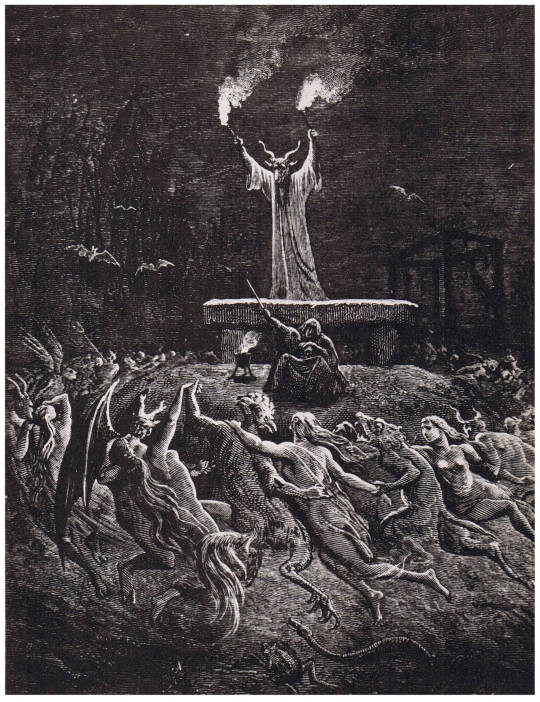
Walpurgis Night.
Hexennacht. April 30.
A Short History of the Night of the Witches
The origins of the image of Walpurgis night being a witches’ sabbath are unclear. However, it is striking that it coincides with Beltane and maybe other pagan festivals in earlier time. Goethe presumed in one of his poems such an origin.
St. Walpurga
For Christians, Walpurgisnacht is also known as the Feast of Saint Walpurga, that is celebrated from the evening of April 30 to the day of May 1st. Saint Walpurga or Walburga was the daughter of St. Richard the Saxon Pilgrim and sister of St. Willibald and St. Winibald. When her father went on a pilgrimage with her two brothers to the Holy Land, he left Walpurga, who was only 11 years old at the time, with the nuns of Wimborne Abbey, where she was educated and learnt how to write.
She traveled in an attempt to bring German pagans to the Christian faith and she also authored Winibald’s biography, which is why she is considered as one of the first female authors in Germany and England. Walpurga became a nun in Heidenheim am Hahnenkamm, the monastery founded by her brother Willibald, where she became the abbess after his death in 751. Walpurga herself died on February 25 on 777 or 779 and she was canonized by Pope Adrian II on May 1st, around 870, when her relics were transfered to Eichstätt, Germany.
St. Walpurga is prayed to for protection against witchcraft and it is believed that during the night of April 30, she is able to ward off spells, witches, and evil spirits. This belief may stem from the overlapping of her canonization with Hexennacht or the Night of the Witches, the celebration that has its origin in ancient fertility celebrations. Hexennacht is a Germanic tradition more prevalent in the 17th century, when witches and sorcerers gathered together celebrate.
To protect against their magic, the Western Christian Church appointed the night of April 30 to St. Walpurga’s Feast. In the 18th and 19th centuries, Walpurgisnacht was popularized and its witchy connotations were revived through the literature of the time, such as in Jacob Grimm’s work who wrote in 1833: “There is a mountain very high and bare… whereon it is given out that witches hold their dance on Walpurgis night”.
Goethe also dedicated a poem to the celebration called “Die erste Walpurgisnacht” (The First Walpurgis Night), which was set to music by Felix Mendelssohn and published as his Opus 60 in 1843. The poem contrasts sharply with the Walpurgisnacht described in his main work “Faust”. In his ballad, Goethe relates the superstitions around Walpurgis night to the usage of devil’s masks by pagan’s in order to exploit the superstitions of their Christian suppressors and to protect their identities.
57 notes
·
View notes
Text
Touring Day 1
After getting some much needed rest, we woke up today to the most beautiful sunrise over the Sea of Galilee, visible from our hotel room! We enjoyed an incredible breakfast of pastries, cheese, salads, and pasta(?!). I’ll be sure to post a food blog at some point, but for now I’m sure you’re more interested in the pictures of everything else.

Our first stop of the day was to Cana of Galilee: the location of the first of the seven signs that Jesus is the Messiah or the first miracle. The story is found in John 2:1-12.

Weddings in Jesus’ day averaged between 700 and 1200 people at them. Everyone was invited: neighbors, immediate family, extended family, anyone with any relation to you; which at that time, could mean everyone. Not only was the guest list large, but the celebration lasted 6 days with the actual wedding happening on the 7th day. The church we visited, The Wedding Church at Cana, sits on top of the ruins for the only first century synagogue in Cana; therefore, this is pretty much where it happened.

Top: outside of The Wedding Church at Cana
Below: looking down into the ruins of the first century synagogue

John 2:6-7 reads: “Now there were six stone water jars there for the Jewish rites of purification, each holding twenty or thirty gallons. Jesus said to the servants “Fill the jars with water.” And they filled them to the brim.” Pictured below is one of those jars with me for size comparison. They were huge and it was so cool to see it in person.

Two funny bonuses from our time at the church: we got to taste “Real Cana Wedding Wine” which is a total tourist trap because there are no wineries in Cana and we got to renew our marriage vows in the chapel (because after two months of marriage we already needed it right? HA no, everyone just told us to jump in the group participating because, well, why not!). Regardless, it was still fun to look Jon in the eyes and promise to love him forever, again.
Our next stop of the day was the the Mar Elias Educational Institution, a school helping to build relationships across barriers in a very divided country. We met with Archbishop Elias Chacour, the founder of the school, who told us about his life and mission with the school. We bought one of his books and had it signed before heading off to lunch.

Pictured above: Jonathan and I getting our book signed (I think this is the first “our” book in the library, guesses on who will read it first?)
After lunch we went to Nazareth to the Basilica of the Annunciation: Mary’s House and the site of the Annunciation. This is my absolute favorite place in all of the Holy Land. I was so excited to go back that I ended up crying on and off the whole time we were there. Surrounding the outside of the Basilica are images of Mary donated by countries from all over the world. Here are a few of my favorites:
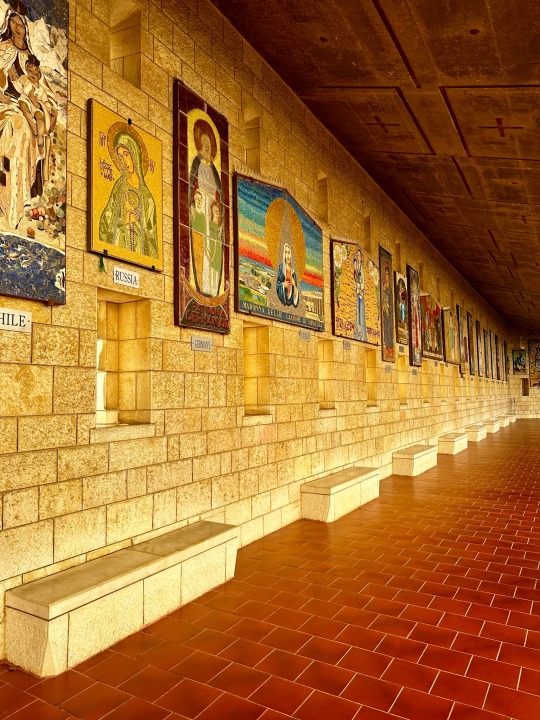
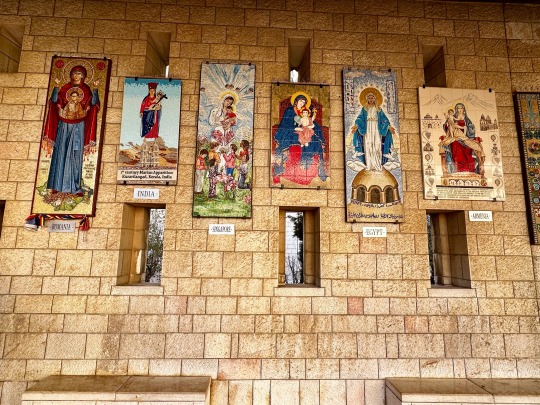
Going inside the Basilica you can see and walk up to Mary’s house. What I love about it so much is how normal it is. Most people in Nazareth lived in caves, nothing fancy, just rocks. They know this specific one is important because there is an inscription on the wall that dates to the first century that says “Hail Mary.”
After the Basilica we went to Mount Precipice which is known as the place where the people of Nazareth tried to throw Jesus off a cliff after teaching in the synagogue (Luke 4:14-29). We watched the sunset and it was absolutely magical.
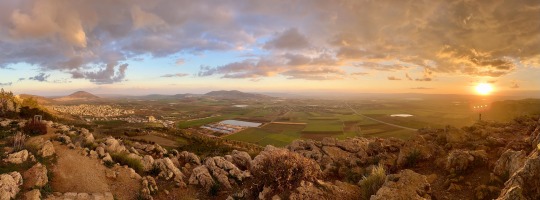

Tomorrow we will spend more time around Galilee and then head over to Bethlehem for Orthodox Christmas Eve!
0 notes